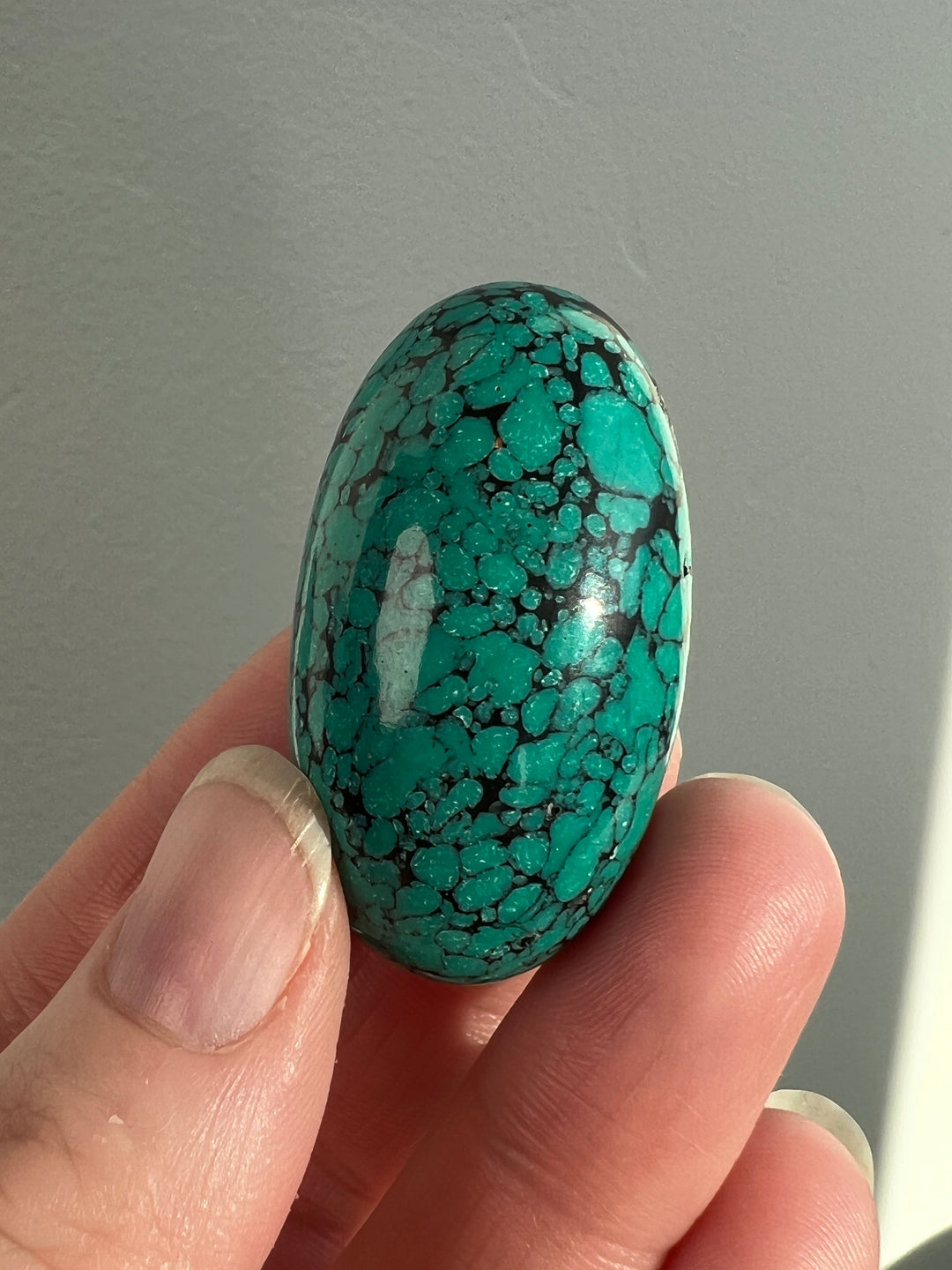Geological & Scientific Properties | Tibetan Turquoise
Tibetan Turquoise is a highly esteemed variety of turquoise, a copper-based mineral, known for its unique qualities and cultural significance, particularly in Tibetan and Nepalese cultures. Here's an overview of Tibetan Turquoise's geological and scientific properties:
Chemical Composition and Structure:
- Composition: Turquoise is a hydrated phosphate of copper and aluminum with the chemical formula CuAl₆(PO₄)₄(OH)₈·4H₂O. The presence of copper gives it the characteristic blue color, while traces of iron can turn it greener.
- Crystal System: It crystallizes in the triclinic system, usually forming as microcrystalline, massive aggregates rather than well-defined crystals.
Physical Properties:
- Color: Tibetan Turquoise ranges from bright blue to greenish-blue, often with black or brown matrix patterns (veins or patches) which are remnants of the rock in which it formed.
- Hardness: It has a hardness of 5 to 6 on the Mohs scale, which is relatively soft and thus susceptible to scratching and weathering.
- Luster: The luster of turquoise is typically waxy to dull.
- Transparency: This mineral is generally opaque.
Geological Occurrence:
- Formation: Turquoise typically forms in arid regions through the process of secondary mineralization in copper deposits, where acidic, copper-rich groundwater seeps downward and reacts with minerals containing phosphorus and aluminum.
- Associated Minerals: It is often found in association with other copper-based minerals and is commonly mined from copper deposits.
Major Deposits:
- Tibetan Turquoise, as the name implies, is predominantly found in Tibet, but similar qualities of turquoise can be found in neighboring regions, including Iran, the Sinai Peninsula, and the Southwestern United States.
Tibetan Turquoise is not only valued for its beauty and as a gemstone but also holds significant cultural and spiritual importance. It has been used for centuries in Tibetan and Nepalese art, jewelry, and religious artifacts. The stone is believed to have protective qualities and is often used in traditional healing practices. Its vibrant color and matrix patterns make each piece unique, contributing to its popularity and high esteem in various cultures.









